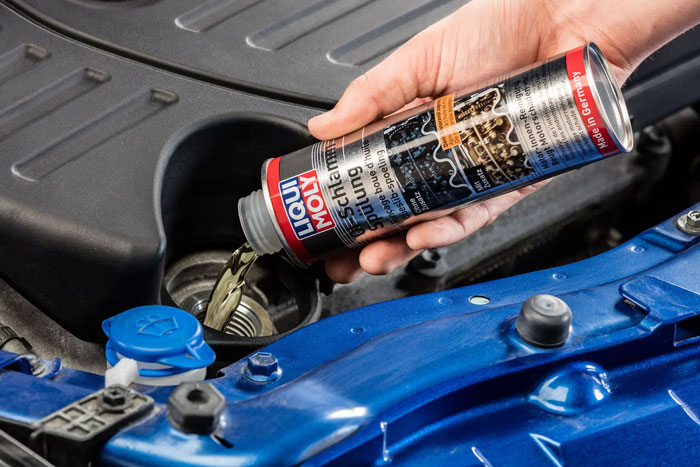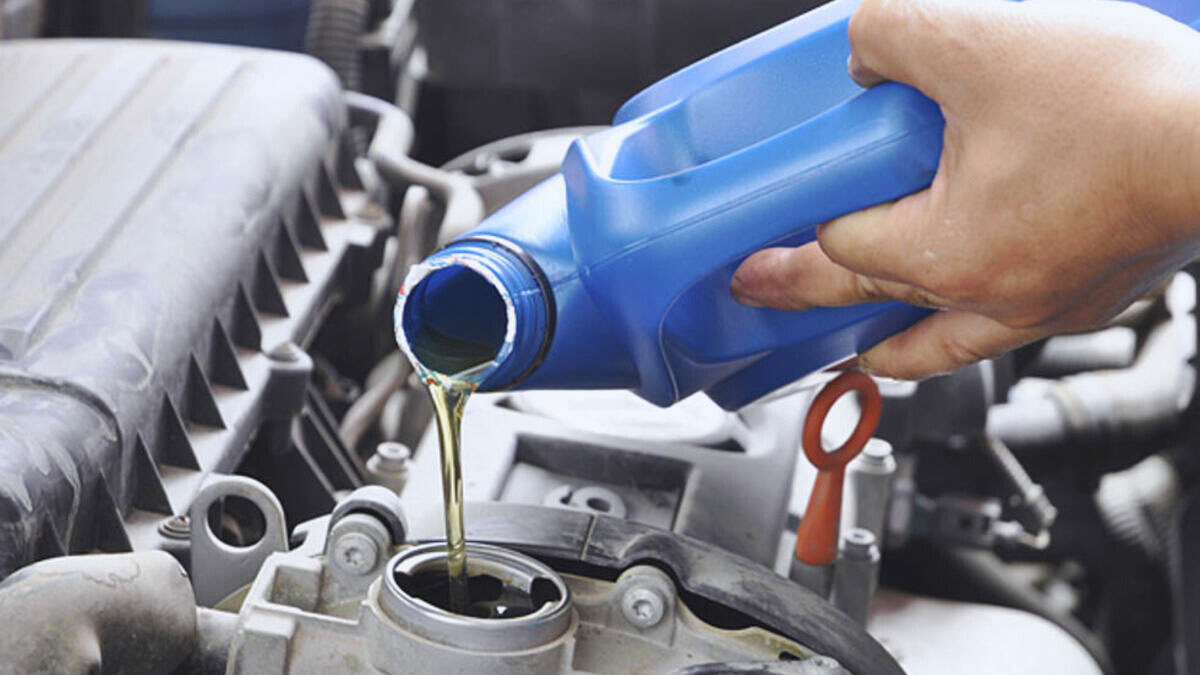So, you’ve probably heard the term “engine flush” thrown around at the mechanic’s shop or in those mysterious car maintenance conversations. But what’s the deal with it? Is it a magical elixir that’ll make your car run smoother than a greased lightning bolt, or is it a sneaky serpent waiting to wreak havoc under your hood? Well, buckle up, my fellow car enthusiasts, ’cause we’re diving into the wild world of engine flushes!
Picture this: you’re cruising down the road, wind in your hair, tunes blasting, feeling like the king or queen of the asphalt jungle. But wait, is your engine secretly harboring a grime party that’s just waiting to crash? That’s where the engine flush swoops in like a superhero… or does it? Let’s unravel the mystery and separate the engine flush heroes from the zeros in this automotive saga!
What Is an Engine Flush?
Hey there, curious minds! Let’s jump into the mysterious world of engine flushes and uncover what makes them tick—or rather, what makes them flush!

Uncovering the Magic Potion
Imagine your car’s engine as a bustling city, with oil flowing like traffic on a Monday morning. Over time, gunk and sludge can build up, causing congestion that even the most patient drivers (or engines) wouldn’t tolerate. Here’s where the magic of an engine flush comes in: it’s like a cleansing spa day for your engine, clearing out all the grime and revitalizing its performance.
Busting the Myths
Some folks swear by engine flushes, claiming they work wonders for their vehicles. Others raise eyebrows, skeptical about the necessity of such a procedure. So, are engine flushes a hidden gem or just another bottle of snake oil? Let’s sift through the facts and fiction to uncover the truth behind this automotive enigma.
Pros of Using an Engine Flush
Well, here’s where things get exciting! Let’s jump into the benefits of treating your car’s engine to a spa day with an engine flush.
Enhances Engine Performance
When I think of enhancing engine performance, I picture my car turning into a superhero with a cape on the highway. An engine flush can help remove built-up sludge, varnish, and deposits that are mucking things up under the hood. Imagine your engine breathing a sigh of relief after shedding all that unwanted baggage. It’s like doing yoga for your car!
Extends Engine Life
I don’t know about you, but I want my car to outlive me. Giving your engine a flush can help extend its lifespan by reducing wear and tear. By clearing out the gunk that’s been squatting in your engine, you’re basically giving it a new lease on life. It’s like hitting the reset button and saying, “Let’s start fresh, old buddy!”
Cons of Using an Engine Flush
Ah, the moment of truth! Let’s jump into the not-so-shiny side of engine flushing. Brace yourselves, folks!
Potential Risks to Engine Components
Buckle up, dear readers, as we investigate into the risky business of engine flushing. Here are a few cautionary tales to ponder:
- Seal Degradation: Engine seals might not be too thrilled with all that cleaning going on. Sometimes, it’s like trying to evict a stubborn tenant—it can get messy.
- Loosened Debris: Picture this: those hidden deposits getting a wake-up call and deciding to go on a road trip throughout your engine. Sounds like a messy adventure, right?
- Unforeseen Leaks: Just when you thought your engine was sealed tight, flushing can stir things up and lead to unexpected leaks. It’s like finding a surprise puddle under your car—definitely not cool.
- Aging Parts: Your engine might not appreciate the additional stress of a flush. It’s like giving your grandma a surprise dance lesson—it might not end well.
Voiding Vehicle Warranty
And now, ladies and gentlemen, prepare yourselves for the ultimate plot twist: the dreaded voiding of the vehicle warranty. Here’s how using an engine flush can leave you hanging:
- Manufacturer’s Frown: Some manufacturers aren’t too keen on the idea of engine flushing. It’s like trying to sneak past your boss—it might work for a while, but eventually, they’ll catch on.
- Warranty Woes: Say goodbye to that safety net of warranty coverage. Using an engine flush could give the warranty gods a reason to turn their backs on you. It’s like playing a risky game of chance—do you feel lucky?
- Costly Consequences: Voiding your warranty could lead to some serious wallet pain. Imagine your bank account giving you the silent treatment after an unexpected hit. Ouch!
How Engine Flush Affects Different Car Models
When it comes to how engine flush impacts various car models, it’s essential to consider the differences between older and newer vehicles.
- Older Cars:
- Increased Risk: Older cars may have more accumulated sludge and deposits, requiring an engine flush for improved performance.
- Age Concerns: Engine flush for older models can be like giving them a spa day – a rejuvenating experience, but it could potentially uncover underlying issues due to wear and tear.
- Newer Cars:
- Manufacturer Warnings: Newer cars often come with advanced engine technologies that may not benefit from an engine flush.
- Warranty Issues: Using an engine flush on a newer model could void the vehicle warranty, leading to unexpected consequences for the car owner.
Best Practices for Engine Flushing
So, you’re thinking of giving your car’s engine a little spa day with an engine flush. Let me walk you through the best practices to ensure your four-wheeled friend enjoys the experience without any unexpected hiccups. Remember, we want those engine pipes running smoother than a penguin sliding on ice!
When to Consider an Engine Flush
When your car starts sounding like a rock band drum solo, it might be time for an engine flush. If you’ve been neglecting regular oil changes or if your vehicle is feeling a bit sluggish, an engine flush could be just the pick-me-up it needs.
- Gather Your Supplies: Think of it as a treasure hunt for your car’s well-being. You’ll need an engine flush cleaning solution, fresh oil, a new oil filter, and some elbow grease.
- Warm Up the Engine: Start your car and let it run for a few minutes to get the oil flowing smoothly.
- Add the Engine Flush: Pour the engine flush cleaning solution into the oil fill port and let your car idle for the specified time. It’s like giving your engine a nice bubble bath.
- Drain the Oil: Remove the oil drain plug and let that old, gunky oil flow out like a river during a storm.
- Replace the Oil Filter: Out with the old, in with the new. Swap out the oil filter to ensure your engine is getting only the freshest treatment.
- Add Fresh Oil: Pour in the recommended amount of fresh oil, and watch your engine quench its thirst like you after a long hike.
- Check for Leaks: Start your car again and keep an eye out for any leaks. We want your engine dry and leak-free, not like a broken watering can.
Remember, while an engine flush can work wonders for some cars, others might not need it. So, listen to your car’s whispers and murmurs; it might just be asking for a little engine pampering.
Conclusion
Well, folks, there you have it! Engine flushes are like a spa day for your car – they can work wonders in clearing out the gunk and reviving performance. Remember, timing is key – don’t force a spa treatment on your car if it’s not feeling it. Listen to your four-wheeled friend and pamper it accordingly. Just like how I know when it’s time to treat myself to a massage or a slice of cake, your car will give you signals. So, go ahead, give your vehicle the royal treatment it deserves, but always with caution and consideration. Happy driving, and may your engines purr like content kittens!
Frequently Asked Questions
What are the benefits of using an engine flush in car maintenance?
An engine flush can enhance engine performance by removing harmful sludge buildup, improving overall efficiency and longevity of the engine.
What are the potential drawbacks of using an engine flush?
Using an engine flush comes with potential risks like seal degradation and voiding warranties, so it’s crucial to consider these factors before proceeding.
How can I safely perform an engine flush?
To safely perform an engine flush, gather necessary supplies, warm up the engine, add the cleaning solution, drain and replace the oil, and check for leaks to ensure proper maintenance.
When should I consider getting an engine flush?
Consider getting an engine flush once or twice a year if your car accumulates sludge buildup, particularly after multiple short trips or in hot and dusty conditions, to maintain optimal engine health.
Is an engine flush necessary for modern cars with advanced technologies?
While an engine flush can benefit older cars with sludge buildup, modern cars with advanced technologies may not require it and could potentially be harmed by the process, possibly leading to warranty issues.

